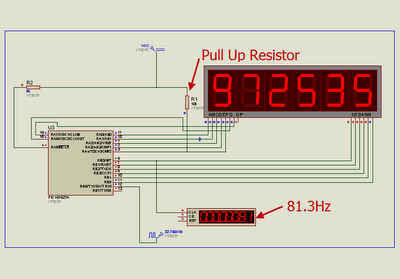A 7-segment display is an elementary but practical electronic component that you can use to display numbers and sometimes letters. It’s just seven little LEDs arranged in a specific pattern that makes it easy to read numbers.
Using 7-segment displays has several benefits. They are simple to interface with microcontrollers and require very few input/output pins. They are also easy to read and can display numeric characters clearly, making them a popular choice for digital clocks, calculators, and other devices that require numerical output. Additionally, they are relatively inexpensive and widely available, making them a cost-effective solution for many applications. Finally, 7 segment displays can be used in indoor and outdoor environments and are available in various sizes and colors to suit different needs.
The seven segments are arranged in the shape of a rectangle, with a small eighth segment at the bottom for the decimal point. Turning on different combinations of the seven segments allows you to display all the numbers from 0 to 9.

One of the great things about 7-segment displays is that they’re straightforward to use with microcontrollers like Arduino or Raspberry Pi. You can connect the display to a few digital pins on the microcontroller and start displaying numbers immediately.
Some common uses for 7-segment displays include:
- Displaying the time on a clock or stopwatch
- Showing temperature or humidity readings
- Indicating levels on a fuel gauge or other measuring device
- Displaying numbers for a scoreboard or other game
For this project, you’ll need to use six pieces of CD4543 BCD to 7-segment decoder. These for driving the 6-digit LED 7-segment display for the sake of simplicity of the software. Before that, you have to know the technique of Multiplexing, which is based on the idea of Persistence of vision of the human eyes.
By using the multiplexing technique, the number of required connections for six digits display can be reduced from 42 pins to 7-segment + 6 digits = 13 pins! Yep, with this method, you can drive six digits 7-segment display by only using a PIC16F627A.
The multiplexing implementation is very similar to driving the LED Dot Matrix. Hence you can use Timero (Timero is an 8-bit timer) interrupt to switch through each timer quickly.


Or you can use charlieplexing (taking advantage of tri-state outputs) and do the same thing with 7 pins.